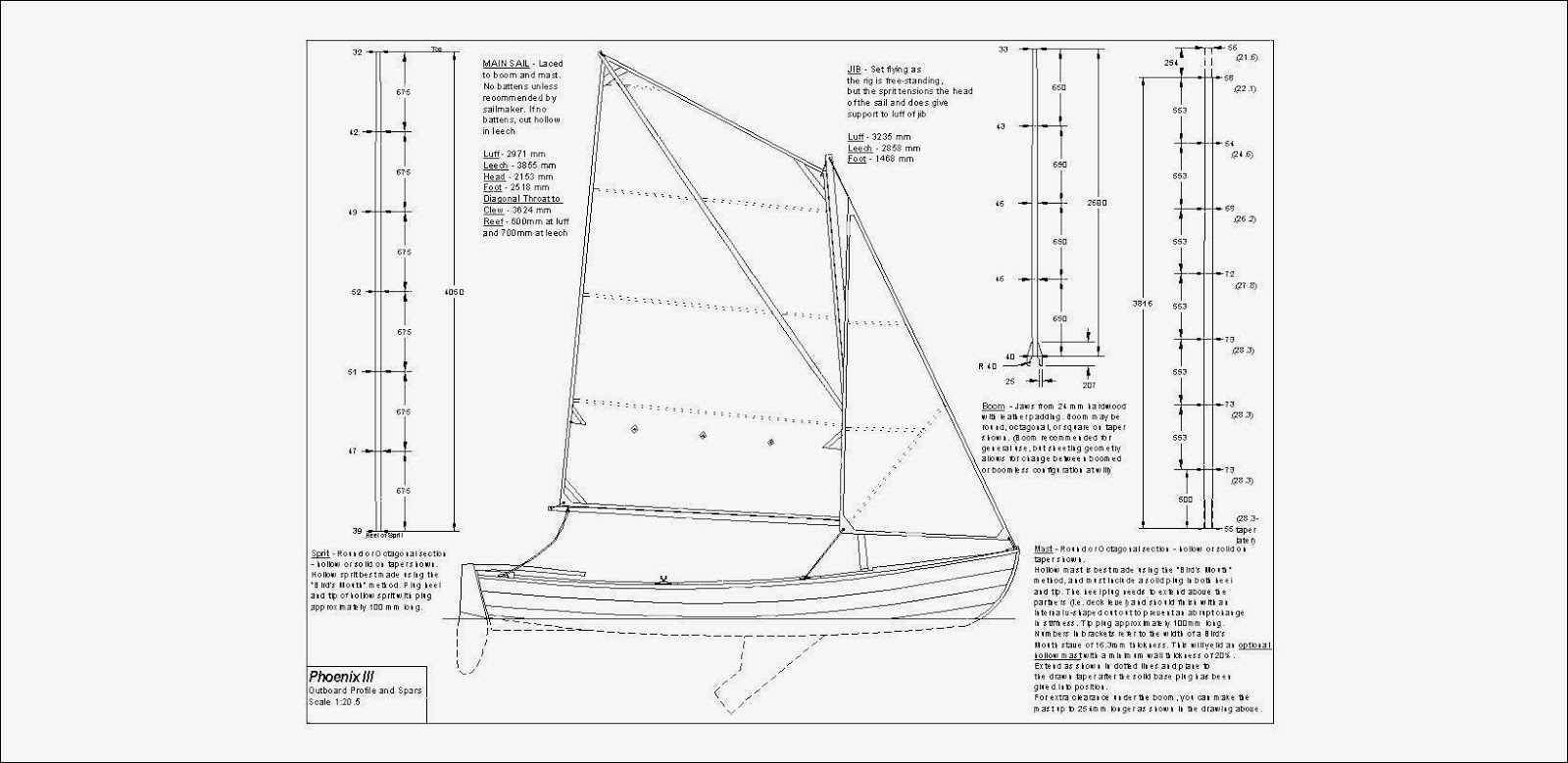Flint is one of my favourite designs, having shown that she is one of those unusual craft which can work effectively as a rowboat, a motorboat, and as a sailing boat. You can read more about her
in this post and several others which you can find by using the search function of the blog.
 |
| Flint, showing a handsome profile.... |
 |
| .....and her deep and sharp entry lines |
 |
| Here she is with a very heavy load, doing 6.1 knots (by GPS) with a Yamaha 2 hp at reduced throttle |
At the request of a number of people, I designed three different sailing rigs to go into
Flint,
 |
| Flint's standard rig |
but before any of my sail-plans were tested, a number of
Flint customers had gone their own way with successful results.
 |
| Alec Morgan's widely travelled Flint, here displaying her surprisingly successful Crab Claw rig |
First off the mark was Alec Morgan, who has travelled extensively on South Queensland waters here in Australia, regularly departing and arriving through ocean surf. Alec made a Crab Claw rig using polytarp, with surprisingly successful results. There is no daggerboard, and the only lateral plane is supplied by the sharp entry lines up forárd.
 |
| Flint on the east coast of USA showing off her ex-sailing canoe rig |
Above is a photo of
Flint being sailed by a gentleman on the east coast of the US. I'm ashamed to say that I'm unable to locate the man's name at the moment, but I remember that he had sailed her with satisfaction in a number of locations.
Brian Guzas
built a
Flint in America, and he was one of a number of people who asked about the possibility of rigging her with an un-stayed balance lug rig. I did some extra drawings for such an arrangement, but I had to lose the forward rowing location in order to fit a foredeck, buoyancy compartment, and mast partner. Brian finished his boat, and here are some photos of the result.
 |
| Brians boat, Keel Basa, displaying her foredeck and buoyancy compartment |
 |
| Brian looking relaxed |
 |
| Keel Basa running downwind with her free-standing rig |
Very recently, I've finally had the opportunity to test sail a
Flint with the standard rig fitted. She was built by first-timer Adam Smith, who has been using her in her rowing and electric motoring configuration with great satisfaction. Adam is an innovative and determined character, and he decided to make his own sail, using material from an old catamaran or Sailfish sail. Not only that, but he sewed the sail by hand!
I helped Adam rig his boat, and I very diplomatically (I think) told him not to expect too much from his home-made sail, but I had to eat humble pie, as the boat performed extremely well on her first sailing outing.
 |
| That is me trying out the standard rig for the first time. A pivoting tiller extension would be helpful. |
 |
| In the gusts she was easily managed, and the flaring sides kept her surprisingly dry despite the lack of side decks. |
 |
| Neither Adam nor I are light-weights, but the boat sailed fast and remained dry in the gusty conditions. The water was a lot more choppy than the photos indicate. |
The sailing experience was highly satisfactory, and I was also very pleased indeed to find that the very light rig (made possible due to the stayed mast, which is only 40mm (1-5/8") in diameter), stores away to one side in the boat with minimal interference.
Flint can be built from only four sheets of 6mm (1/4") ply, plus a small amount of 12mm (1/2") ply for rudder, daggerboard and transom.
.jpg)
.jpeg)















